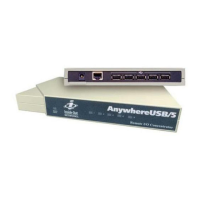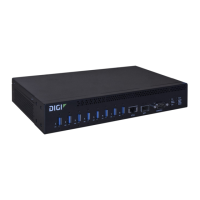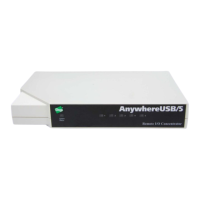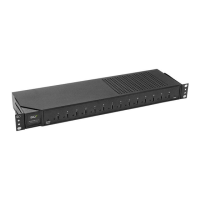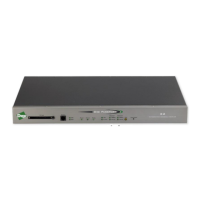Interfaces Wide Area Networks (WANs)
AnywhereUSB® Plus User Guide
158
requests.
n
When primary default route: Only use the DNS servers provided for this interface
when the interface is the primary route.
n
Never: Never use DNS servers for this interface.
k. Enable DHCP Hostname to instruct the AnywhereUSB Plus device to include the device's
system name with DHCP requests as the Client FQDN option. The DHCP server can then be
configured to register the device's hostname and IP address with an associated DNS
server.
n
See RFC4702 for further information about DHCP server support for the Client
FQDNoption.
n
See Configure system information for information about setting the AnywhereUSB
Plus device's system name.
11. (Optional) Click to expand MACaddress denylist.
Incoming packets will be dropped from any devices whose MAC addresses is included in the
MAC address denylist.
a. Click to expand MACaddress denylist.
b. For Add MACaddress, click g.
c. Type the MAC address.
12. (Optional) Click to expand MACaddress allowlist.
If there allowlist entries are specified, incoming packets will only be accepted from the listed
MAC addresses.
a. Click to expand MACaddress allowlist.
b. For Add MACaddress, click g.
c. Type the MAC address.
13. Click Apply to save the configuration and apply the change.
Command line
1. Log into the AnywhereUSB Plus command line as a user with full Admin access rights.
Depending on your device configuration, you may be presented with an Access selection
menu. Type admin to access the Admin CLI.
2. At the command line, type config to enter configuration mode:
> config
(config)>
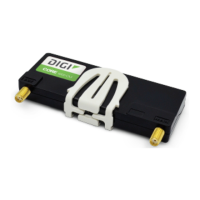
